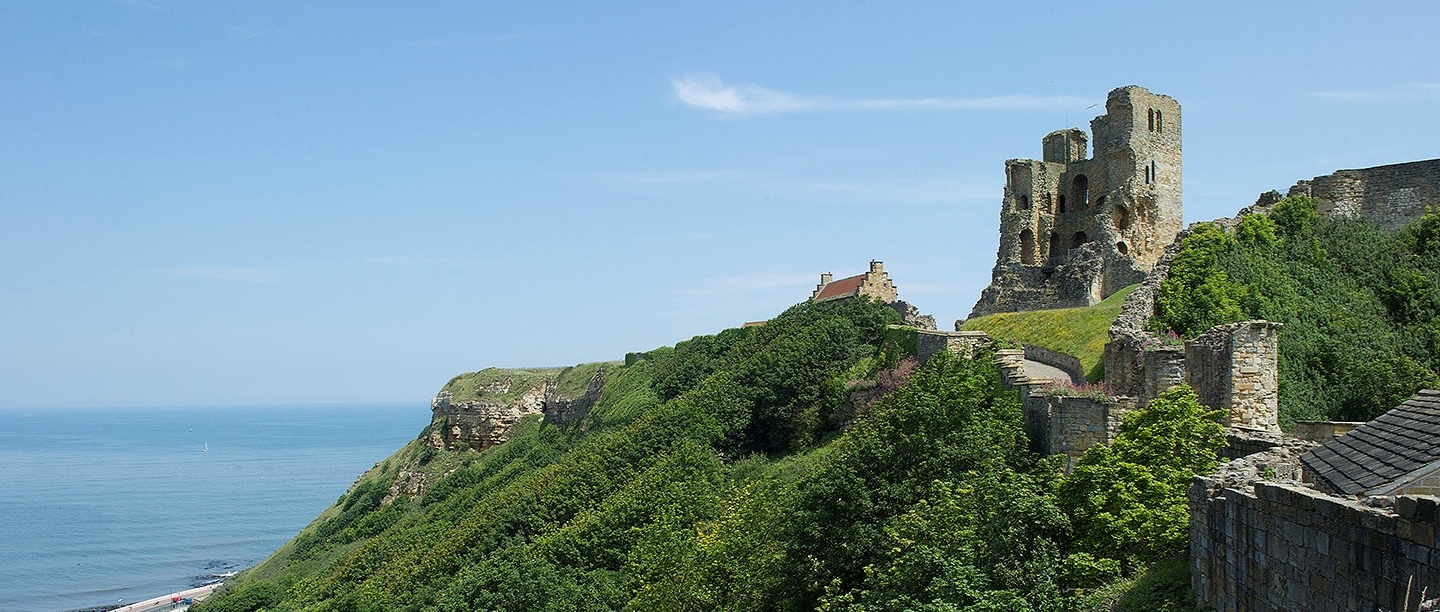Before the Castle
With its own anchorage, Scarborough has long been an important gateway to north-east England. Fragments of pottery dating to between about 2100 and 1600 BC are the earliest evidence of human activity on the headland.
But it is only in the first millennium BC that there is clear evidence of a settlement there. Excavations suggest two distinct periods of habitation, the first about 800 BC and the second about 500 BC, but it is not clear how extensive either settlement was.[1]
In the late 4th century AD a fortified tower was erected on the headland. Finds of coins and pottery, and architectural similarity to other sites, suggest that it was one of a set of signal stations built along the north-eastern coast of Britain at this time.[2] Exactly when and why these were built is much debated, but whatever their purpose, they seem to have been abandoned in the early 5th century.[3]
It has long been supposed that the name Scarborough derives from Old Norse. However, the whole idea of a Viking settlement at Scarborough has recently been questioned and an alternative Anglo-Saxon derivation for the name Scarborough as ‘the hill with the fort’ has been suggested.[4]
Nonetheless, it is clear from the discovery of a chapel within the foundations of the Roman signal station as well as a small cemetery that there was human activity on the headland by 1000.[5]
The early castle
Scarborough is first clearly documented in the mid-12th century as a borough prospering beneath the walls of a great royal castle.[6]
The castle’s founder was William le Gros, Count of Aumâle. Created Earl of York by King Stephen in 1138, he proceeded to establish himself as the unrivalled political master of the region. His work at Scarborough probably began in the 1130s.
Later in the 12th century the chronicler William of Newburgh recorded that Aumâle was responsible for enclosing the plateau of the promontory with a wall and erecting a tower at the entrance, on the site of the present great tower or keep.[7]
But within a few years of the castle’s foundation Henry II acceded to the throne and demanded the return of all royal castles. Scarborough, which was built on a royal manor, was one of these, and Scarborough Castle passed into the hands of the Crown.
DOWNLOAD A PLAN OF SCARBOROUGH CASTLE
A Royal Castle
In 1159 Henry II began to rebuild the castle, planting a new town beneath its walls at the same time. About £650 was spent on the castle over the next ten years, an enormous sum.[8] The principal object of expenditure was the great tower, built 1159–69, most probably as architectural confirmation that the castle had changed hands.[9]
King John is known to have visited Scarborough several times and seems to have developed it, along with Knaresborough, as a major royal castle to control Yorkshire. He spent £2,291 on Scarborough, more than on any other castle in the kingdom,[10] in two phases: first, the creation of an outer wall to the inner bailey in 1202–6, and second, the extension of that wall down to the cliff in 1207–12. During the second stage he also constructed a hall in the inner bailey as well as a new royal chamber block and a separate aisled hall in the outer bailey.
The Castle in the later Middle Ages
Henry III provisioned and maintained the castle throughout his reign, which became one of the greatest royal fortresses in England. Edward I continued to use it as a royal lodging, holding court and council at Scarborough in 1275. Prisoners from his Scottish wars were also held there. In 1312 it was briefly the scene of a siege when Edward II's favourite, Piers Gaveston, took refuge in the castle.
In 1308 Lord Percy and his wife were granted licence to live in the castle and over the next 40 years the Percy family built a bakehouse, brewhouse and kitchen in the inner bailey. The buildings were generally only repaired in extreme need.[11]
Richard III was the last king to stay there, in 1484, while assembling a fleet to resist the expected invasion of Henry Tudor, later Henry VII.
Read a description of Scarborough Castle
The Castle under the Tudors
Though dilapidated, Scarborough Castle continued to play an important role in times of crisis. When the popular rebellion against Henry VIII known as the Pilgrimage of Grace broke out in October 1536, the constable, Sir Ralph Eure, declared his support for the king and was besieged in the castle. Although damaged by gunfire, the castle was held successfully.[12]
Twenty years later the castle was involved in another doomed plot, when in 1557 Thomas Stafford seized the castle and held it for three days, believing he could incite a popular revolt against Queen Mary. The castle was easily captured, and Stafford and his accomplices were executed.
The Civil War
In September 1642 a local gentleman, Sir Hugh Cholmley, was commissioned to hold Scarborough for Parliament, but he was soon persuaded to change sides. Immediately afterwards, while Cholmley was visiting Charles I in York, 40 seamen under the command of Cholmley’s cousin Captain Browne Bushell surprised the guard at night and took the castle.
Cholmley rushed back and persuaded Bushell to return the castle to him. For the next two years Scarborough served as an important Royalist base, its interception of shipping inflicting serious coal shortages on London.
Early in 1645, however, Parliamentarian forces closed in on Scarborough. After three weeks Sir Hugh was forced to retreat from the town to the castle, where for five months he resisted one of the bloodiest sieges of the Civil War.
The bombardment was so intense that the massive walls of the great tower sheared and half the building collapsed. Eventually Cholmley ran out of gunpowder, then money and finally food. He surrendered on 25 July 1645.
The castle was again besieged when the Parliamentary garrison of 100 men under Colonel Boynton declared for the imprisoned king on 27 July 1648, after Parliament had failed to pay them. Boynton eventually surrendered in December. Instructions were given that the castle should be slighted, but opposition from the town preserved it from destruction.
Prison and Barrack
From the 1650s the castle also served as a prison – among those held there was George Fox, founder of the Society of Friends (the Quakers).
In response to the Jacobite Rebellion of 1745–6 a barracks block was constructed within the walls of King John’s chamber block, and this remained in use into the mid 19th century.
The 20th Century
On the morning of 16 December 1914, in the opening months of the First World War, two German warships fired more than 500 shells on the town and castle from the bay. Seventeen civilians were killed and more than 80 seriously wounded.
In 1920 Scarborough Castle was taken into state guardianship by the Ministry of Works. Under its ownership the 18th century barracks block damaged in the German bombardment was demolished. The site of the Roman signal station and chapel was excavated in the 1920s,[13] and the castle was placed in the care of English Heritage in 1984.
Read more about the shelling of Scarborough
Read more about Scarborough Castle
-
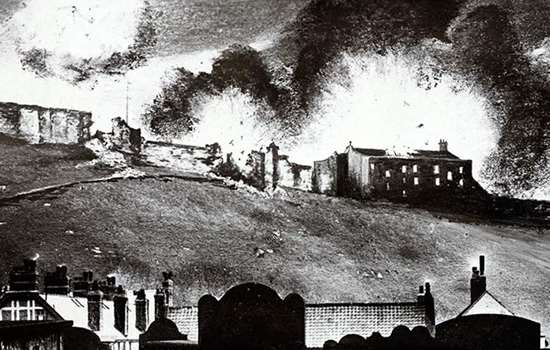
The Shelling of Scarborough in 1914
Read more about the devastating attack on Scarborough by German warships – the first targeting of civilians on English soil during the First World War.
-
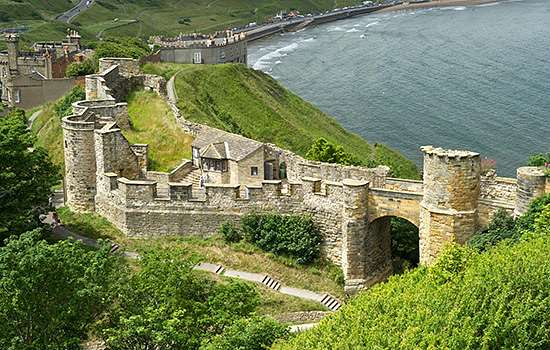
Description of Scarborough Castle
Read a description of the castle, where Henry II’s massive great tower and the medieval castle walls still dominate the Scarborough headland.
-
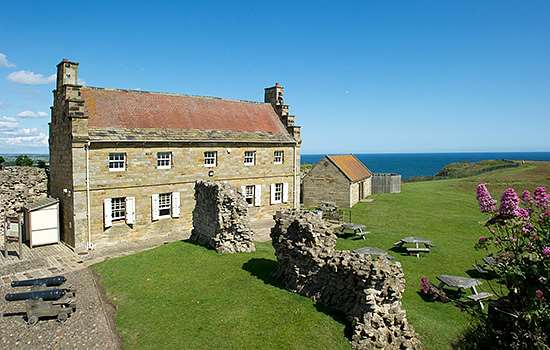
Significance of Scarborough Castle
Scarborough Castle is important both as a royal castle that played a prominent role in national events, and for its architecture.
-
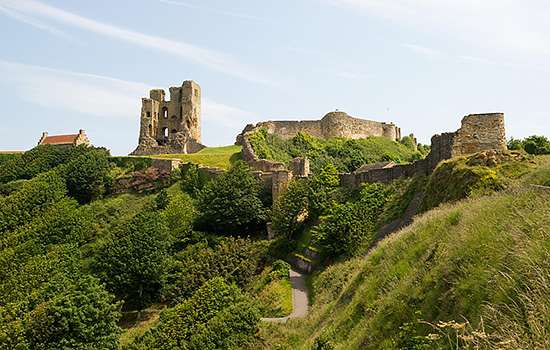
Research on Scarborough Castle
While some aspects of the castle’s history are well established, others – especially what is known of the headland’s earlier history – await further research.
-
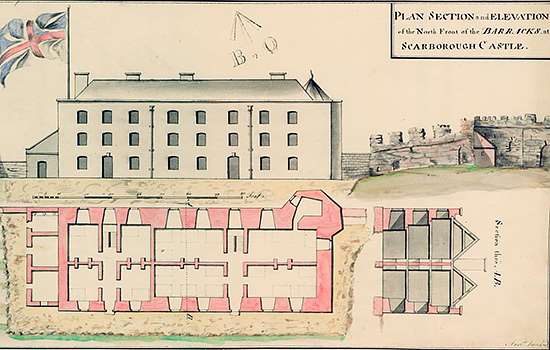
Sources for Scarborough Castle
Use these lists of written, visual and material sources for further research into the history of Scarborough Castle.
-
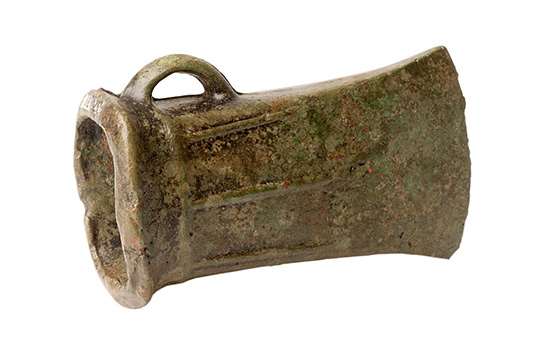
Scarborough Castle Collection Highlights
View detailed images of archaeological finds from the castle spanning thousands of years, from prehistory to the 20th century.
-
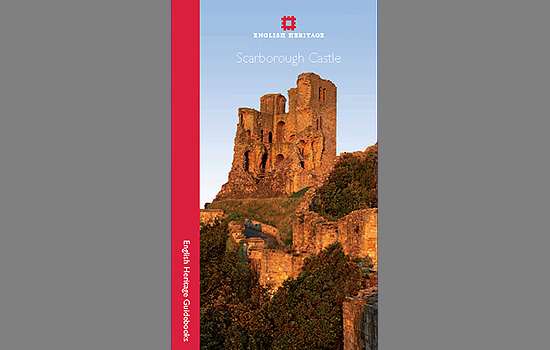
Buy the guidebook
The guidebook offers a complete tour and history of Scarborough Castle, bringing the castle to life with reconstruction drawings and historic images.
-
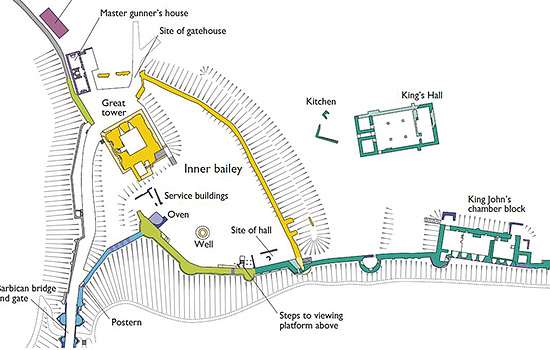
Download a plan
Download this PDF to explore detailed plans of Scarborough Castle that reveal how it has developed over time.
-

MORE HISTORIES
Delve into our history pages to discover more about our sites, how they have changed over time, and who made them what they are today.
